After we have established the relationship between the movement of moisture and existing voltages and currents, we were curious to find out what makes them occur in the first place, then what drives currents and voltages in damp masonry,
The fact that these voltages and currents only occur in damp masonry and reduce to (near) zero in dry bricks, led us to believe that this phenomenon is related to conductivity and the effects of electromagnetic induction.
What is electromagnetic induction? In simple terms, if you move a conductive wire in a magnetic (or electro-magnetic) field, the wire collects some of the field's energy resulting in a generated (induced) voltage in the wire. This can be captured and visualized with a volt-meter.
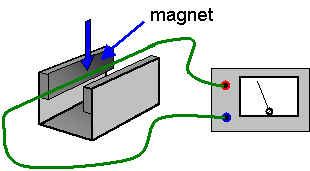
Moving a wire in an (electro)magnetic field induces a current in the wire
Walls are stationary but the fields around them are constantly changing which creates the same net effect.
Response to Existing Fields
How does this apply to brick walls? We have taken 2 bricks piled up on top of each other, connected to some wire electrodes that went into a professional multi-channel volt-meter.
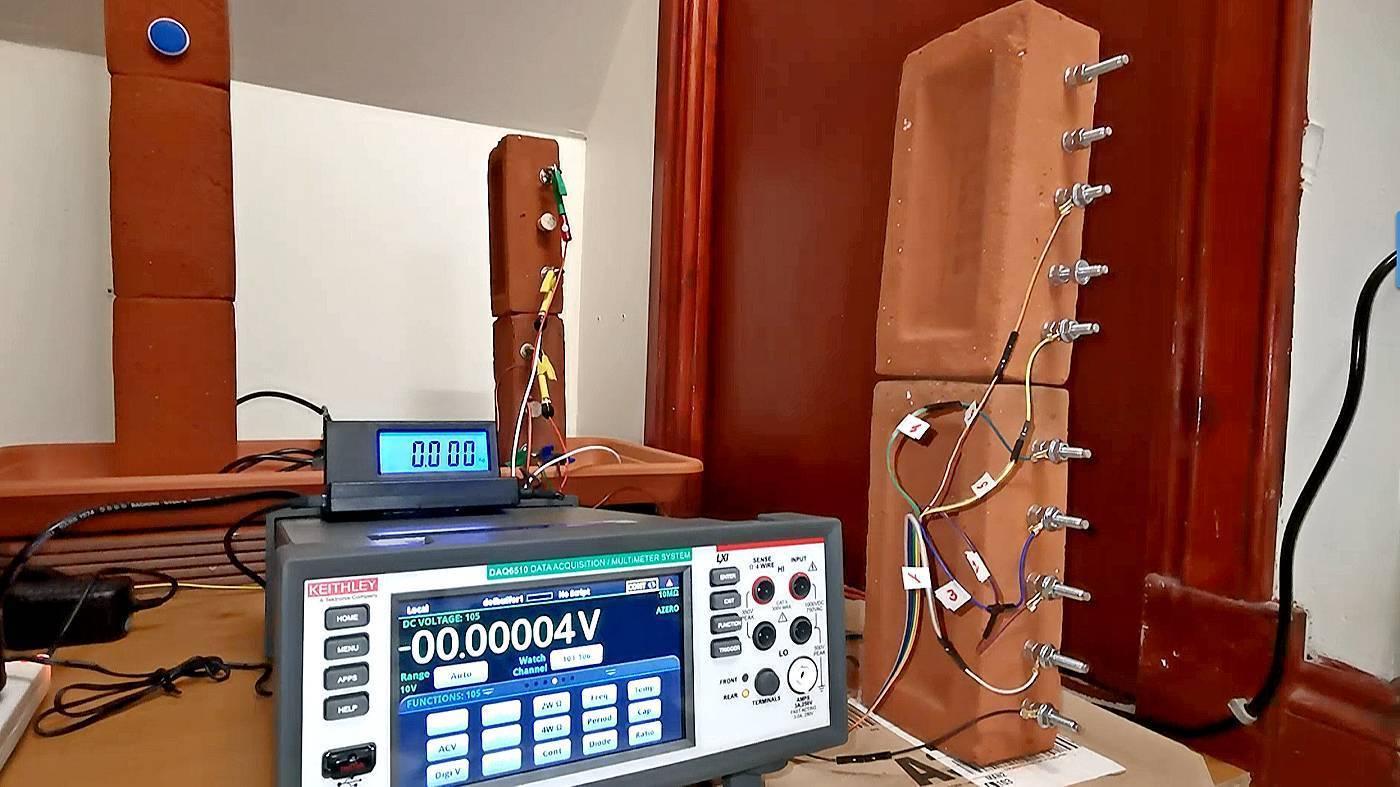
Experimental setup
By itself, without any motion applied, there is only a low voltage present in the "wall", shown by a flat line on the instrument.
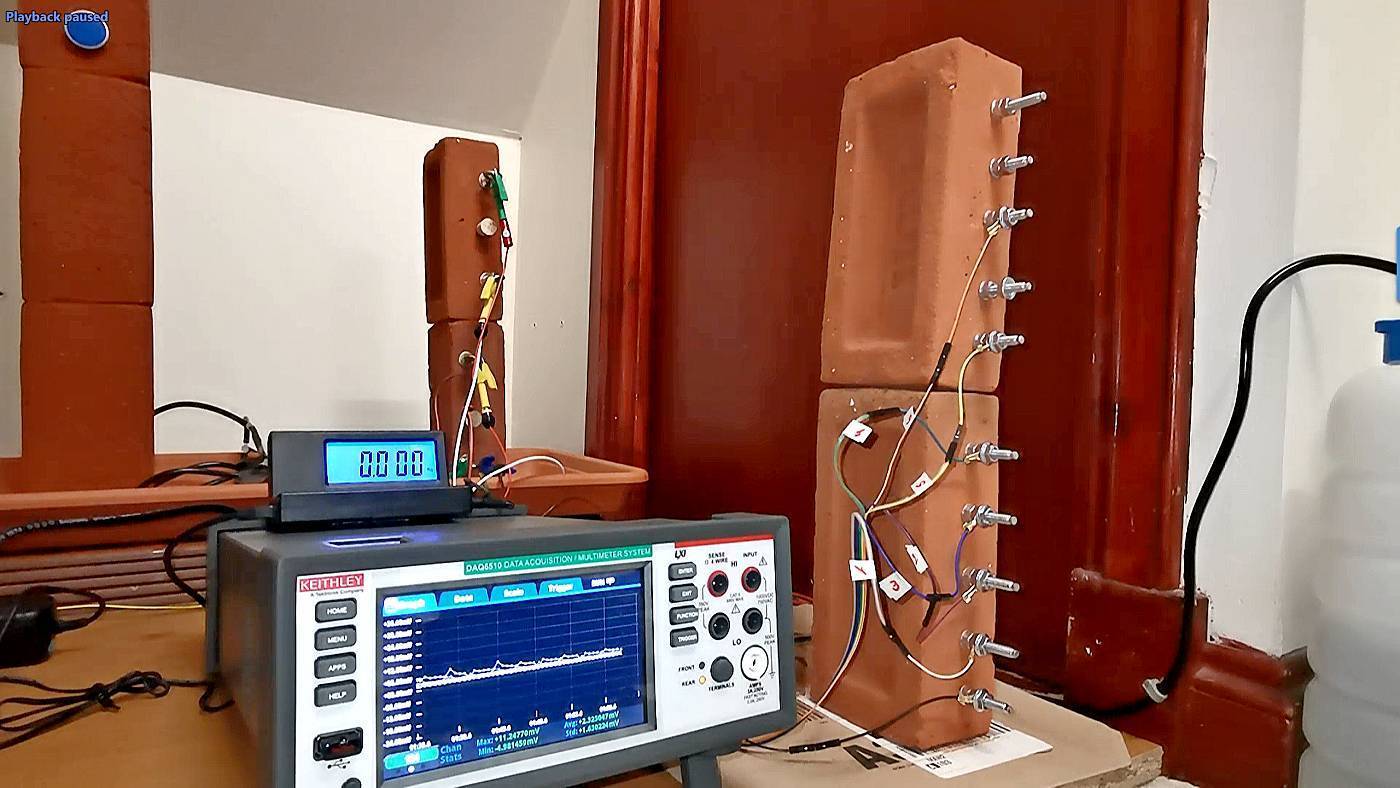
No movement: flat response
Applying movement around the bricks (e.g. waving a hand) intersects the (electro)magnetic field lines, resulting in induced voltages spikes on the instrument.
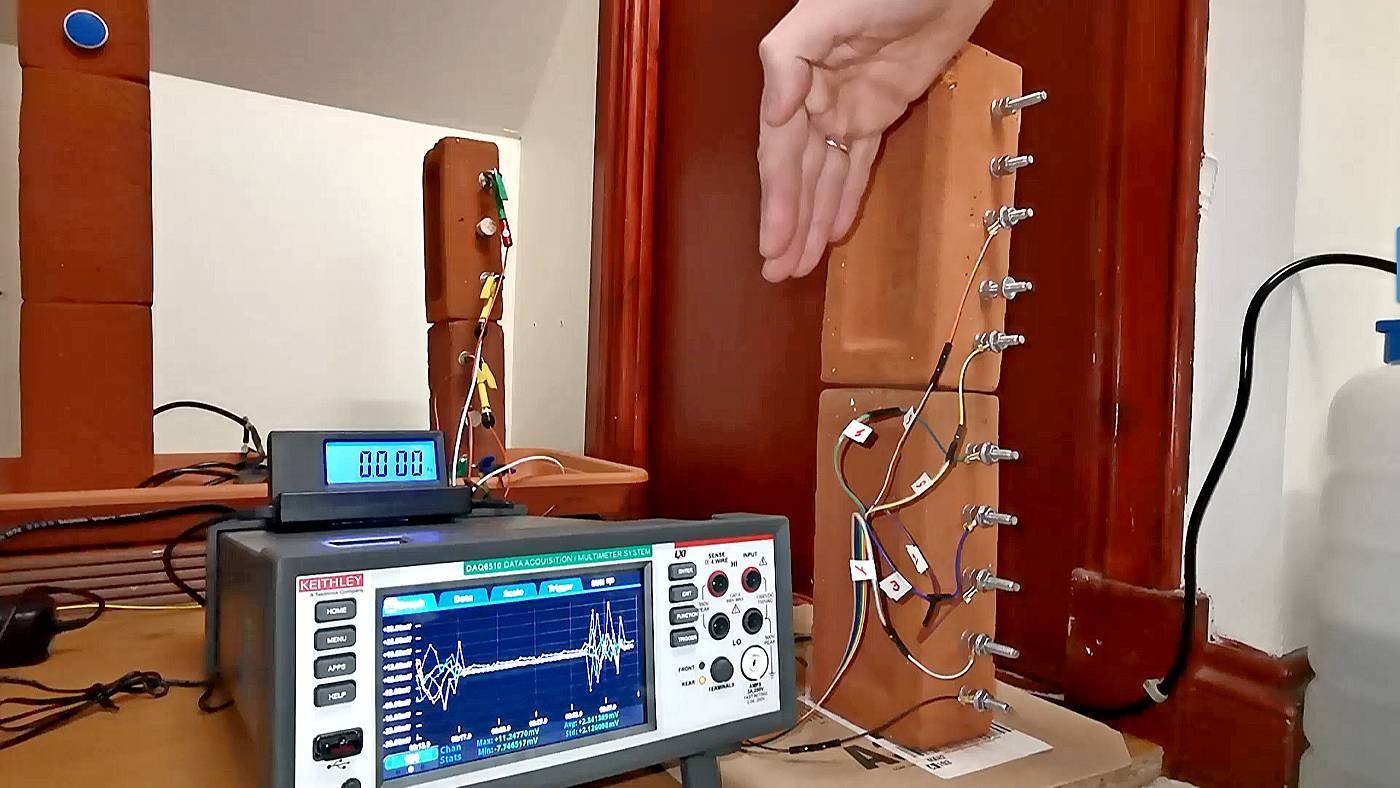
Movement applied: generates an instant response
We have also created a short video demonstrating the concept.
Now, all these fields were already there around the bricks, we were just interacting with them. But what if we would CREATE or generate some fields around the bricks the parameters of which we would control at will, and see the bricks' responses? We have tested that too. and the findings were very interesting.
Response to Artificially Generated Fields
Next, we have done an in-depth investigation on how damp masonry responds to various external signals and fields, testing a wide variety of wave form patterns including regular, irregular, pulsed waves, both modulated and non-modulated.

Testing the masonry's response to various signal patterns
To keep a complex topic simple, we have determined that damp masonry responds differently to different type of electronic signals. There are certain wave forms and frequencies that affect the one or more parameters of the brickwork - including the movement of moisture, both upwards and downwards - while others produce no reaction whatsoever. Here are some examples:
Here is a signal pattern for which the masonry gives a nice symmetrical Gaussian bell-shape distribution curve. The 2 peaks show 2 difference frequencies for which the wall fabric reacts.
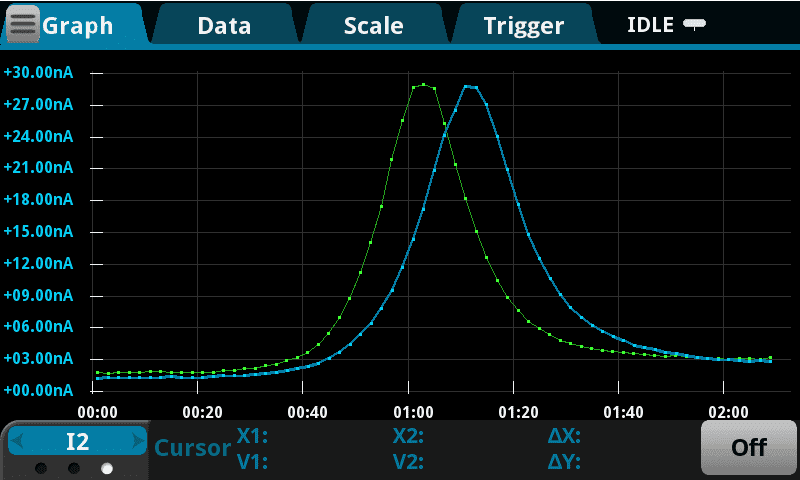
It is interesting to see, that if we perform the same test a number of times, the masonry's response is always the same. For e.g. here is a test done 3 times in a row, producing the same consistent response every single time.
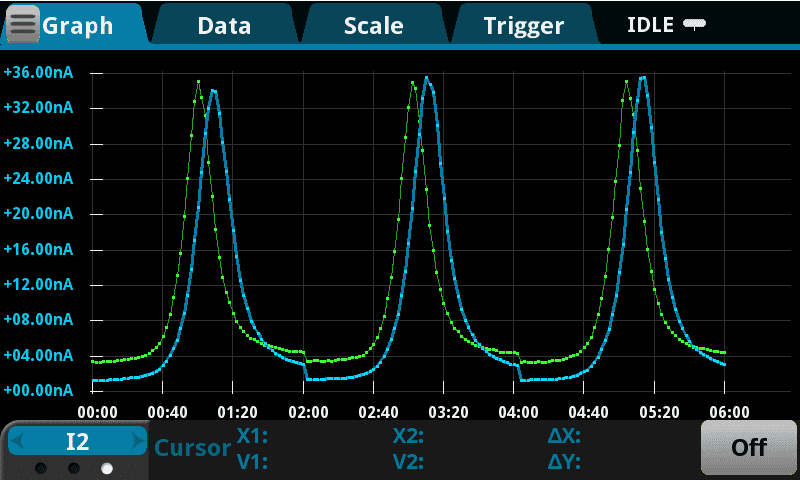
Certain wave forms can consistently affect multiple parameters of the brickwork, as shown below, in response to multiple tests.
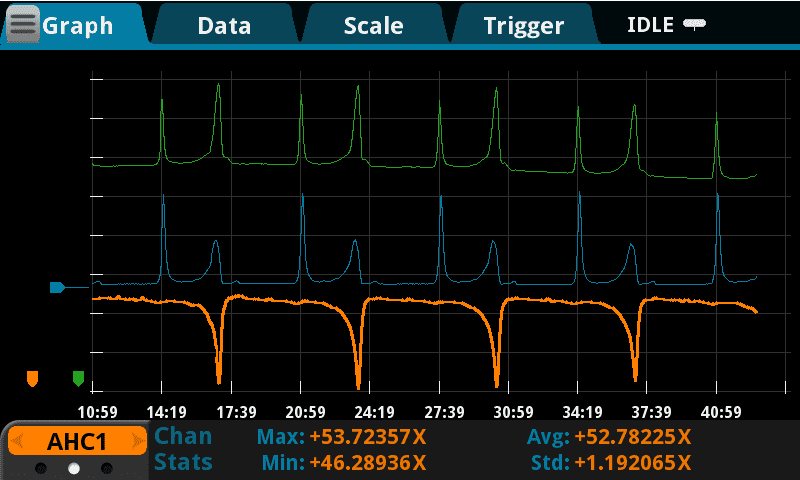
One of the parameters these signals can affect is HUMIDITY. Here the embedded moisture sensors inside the brickwork have registered a drop in humidity (red line below) for that brief amount of time the right frequency has been applied onto the walls - performed twice in a row. This could open new means of reducing the dampness of the brickwork, "wirelessly" and non-invasively.
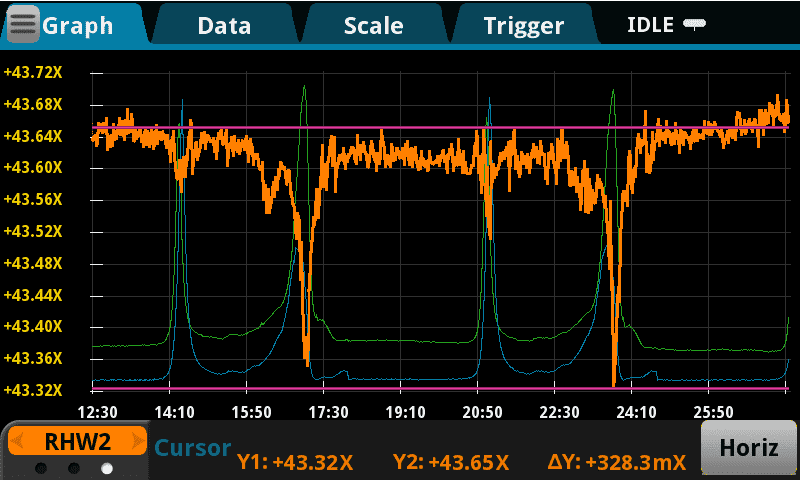
Certain signal types produced a nice, symmetrical series-type response, as the one shown below...
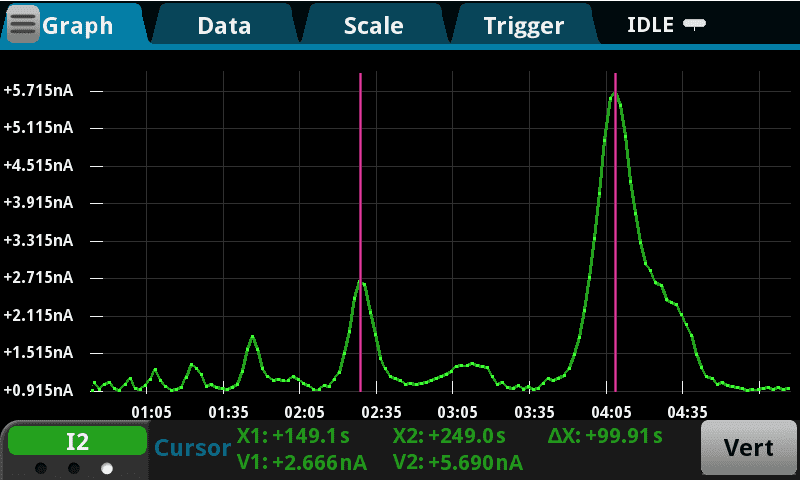
... while others again affect multiple parameters in the masonry, creating complex responses. The possibilities are virtually endless.
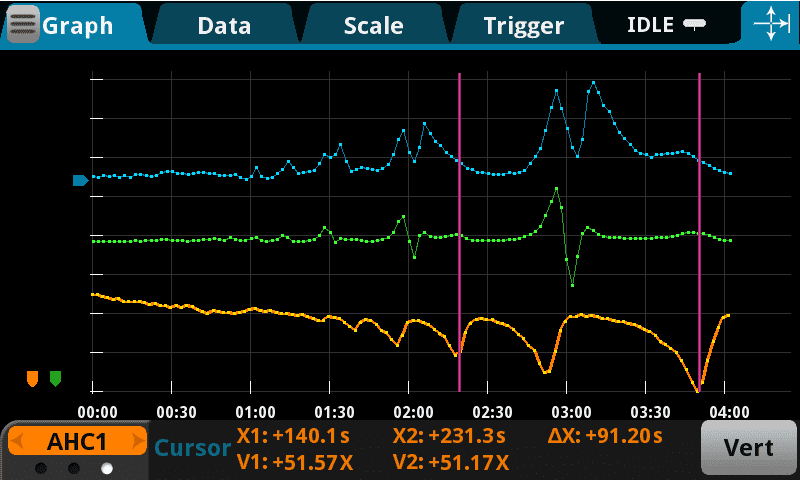
The underlying mechanisms, on how certain frequencies affect the building fabric on molecular level to create these changes is not fully understood yet, it is part of our ongoing research.
Conclusions
Here are some conclusions from these experiments:
- The capillaries of a wet masonry being electrically conductive act as conductors, in which voltages an currents can be induced by external fields.
- Existing fields can be both man-made or of natural origin (e.g. Earth's magnetic field).
- Generated wave forms and frequencies when applied to wet masonry can affect one or several of its parameters, which also includes humidity.
- This means certain frequencies could potentially be used to control humidity levels, making buildings drier or damper, opening the door to new exciting technologies in moisture control.











